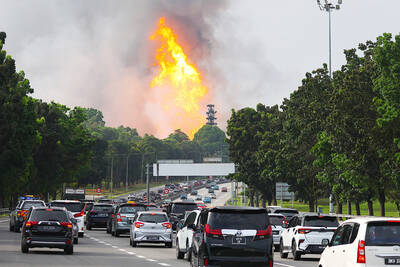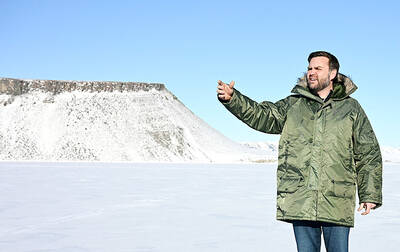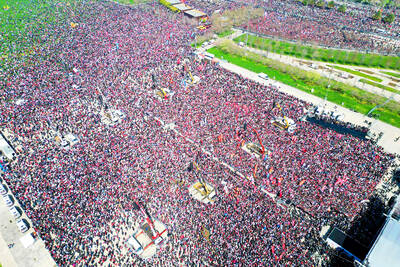It took Ellen Arnstein the better part of two years to win the trust of the people of Camargo, a farming town of 5,000 in southeastern Bolivia.
The mayor agreed to partially fund the Peace Corps volunteer’s proposal to have children plant fruit trees on main avenues.
Arnstein, 27, was about to be interviewed by a local TV crew when she got the call: The Peace Corps was pulling all 113 of its volunteers out of Bolivia.
“I just started crying. I was like, I don’t want to go!” recalled Arnstein, a native of Monroe, New York, as she sat in a cafe in Lima, Peru.
She is among more than 70 volunteers who quit the Corps rather than start over in a different country.
The hasty pullout came directly on the heels of Bolivian President Evo Morales’ Sept. 10 expulsion of the US ambassador for allegedly inciting opposition protests. Arnstein was among disappointed volunteers who believe their government overreacted, hurting US interests with the blanket withdrawal. True, some parts of Bolivia were dangerously unstable, but most volunteers felt no security threat, several told reporters.
“Peace Corps, unfortunately, has become another weapon in the US diplomatic arsenal,” said Sarah Nourse, 27, of Mechanicsville, Maryland, another volunteer who opted out.
Nourse had been developing trash management projects in a small town in the eastern state of Santa Cruz, the center of opposition to the leftist Morales. She questioned the wisdom of depriving Bolivians of a rare firsthand opportunity to weigh Morales’ anti-US rhetoric against real US citizens.
The top US diplomat for Latin America, Thomas Shannon, said that security was the only reason behind the “saddening” pullout.
“We don’t politicize the Peace Corps,” he said.
“Remember, the Bolivians on at least two occasions that I’m aware of said that they thought the Peace Corps was part of a larger intelligence network that they thought we had constructed in Bolivia. Those kind of statements we find very worrisome,” Shannon said.
In fact, a US embassy security officer suggested to a group of Peace Corps volunteers during a briefing last year that they report any sightings of Venezuelan or Cuban activists. After the incident was publicized, the embassy said the officer had not been authorized to make such a request and he left the country.
Currently, 2,174 of the Peace Corps’ 8,079 worldwide volunteers work in Latin America and the Caribbean. They are based in 21 countries in the region.
Honduras and Nicaragua have the largest presence with 194 volunteers each. They are followed by: The Dominican Republic with 193; Paraguay with 187; Guatemala with 184: El Salvador with 175; Panama with 174; Peru with 168 and Ecuador with 155.

A fire caused by a burst gas pipe yesterday spread to several homes and sent a fireball soaring into the sky outside Malaysia’s largest city, injuring more than 100 people. The towering inferno near a gas station in Putra Heights outside Kuala Lumpur was visible for kilometers and lasted for several hours. It happened during a public holiday as Muslims, who are the majority in Malaysia, celebrate the second day of Eid al-Fitr. National oil company Petronas said the fire started at one of its gas pipelines at 8:10am and the affected pipeline was later isolated. Disaster management officials said shutting the

US Vice President J.D. Vance on Friday accused Denmark of not having done enough to protect Greenland, when he visited the strategically placed and resource-rich Danish territory coveted by US President Donald Trump. Vance made his comment during a trip to the Pituffik Space Base in northwestern Greenland, a visit viewed by Copenhagen and Nuuk as a provocation. “Our message to Denmark is very simple: You have not done a good job by the people of Greenland,” Vance told a news conference. “You have under-invested in the people of Greenland, and you have under-invested in the security architecture of this

Japan unveiled a plan on Thursday to evacuate around 120,000 residents and tourists from its southern islets near Taiwan within six days in the event of an “emergency”. The plan was put together as “the security situation surrounding our nation grows severe” and with an “emergency” in mind, the government’s crisis management office said. Exactly what that emergency might be was left unspecified in the plan but it envisages the evacuation of around 120,000 people in five Japanese islets close to Taiwan. China claims Taiwan as part of its territory and has stepped up military pressure in recent years, including

UNREST: The authorities in Turkey arrested 13 Turkish journalists in five days, deported a BBC correspondent and on Thursday arrested a reporter from Sweden Waving flags and chanting slogans, many hundreds of thousands of anti-government demonstrators on Saturday rallied in Istanbul, Turkey, in defence of democracy after the arrest of Istanbul Mayor Ekrem Imamoglu which sparked Turkey’s worst street unrest in more than a decade. Under a cloudless blue sky, vast crowds gathered in Maltepe on the Asian side of Turkey’s biggest city on the eve of the Eid al-Fitr celebration which started yesterday, marking the end of Ramadan. Ozgur Ozel, chairman of the main opposition Republican People’s Party (CHP), which organized the rally, said there were 2.2 million people in the crowd, but